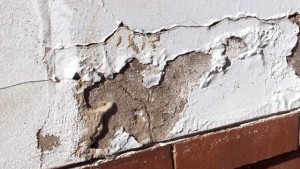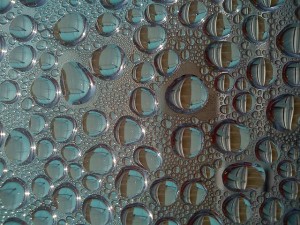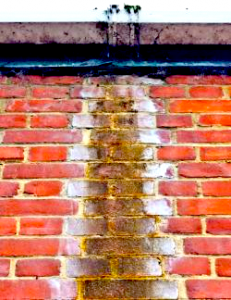Damp problems in a house can be due to a number of causes. Such as rain getting through the walls or roof, moisture being absorbed from the ground, condensation settling on cold surfaces, or a mixture of these. Make sure you determine the cause of the dampness before you try to cure it, otherwise you could be using the wrong remedy altogether.
Damp Down Low – Rising Damp
If you have damp patches, bubbling paint, crumbling plaster, or powdery deposits on wall surfaces close to the floor, rising damp is probably the culprit. Rising damp usually occurs in masonry walls because o
f the failure or absence of a damp-proof course, although poor sub-floor ventilation and bad site drainage can also be contributors.
The Remedy
- Improve the drainage of the site. Make sure the surrounding ground slopes away from the building.
- Check there’s enough room under the floorboards for moisture to evaporate from the soil below and pass out through sub-floor wall vents.
- Install a damp-proof course.
Condensation on Walls
If you’re not sure of the cause of a damp patch on a wall, try the foil test. Dry the wall surface with a fan heater, then tape some kitchen foil tightly over the affected area. If the surface of the foil is wet after 24 hours, you have condensation. Condensation occurs when moisture-laden air builds up inside the house. Poor ventilation and over-efficient draught-proofing are often to blame.
The Remedy
- Install extractor fans or vents in kitchens, laundries, and bathrooms so that moist air is expelled outside the house before it causes problems inside.
- Don’t use moisture-producing portable gas heaters to warm cold, damp rooms.
Damp Patches
Damp patches on walls are generally the result of penetrating damp. It is when water from outside gets into the brickwork through gaps and cracks. If the patches are clustered around windows and doors, then it’s likely that rain is getting in through gaps. If the damp is below the opening, it may be because there is no drip groove below a projecting sill. Any other patches of damp are most likely caused by faults in the brickwork, including cracked pointing.
The Remedy
- Keep external walls, including the pointing and the paintwork, in good condition.
- Seal the gaps around the window and door frames.
- Clear out or cut drip grooves below windowsills.


